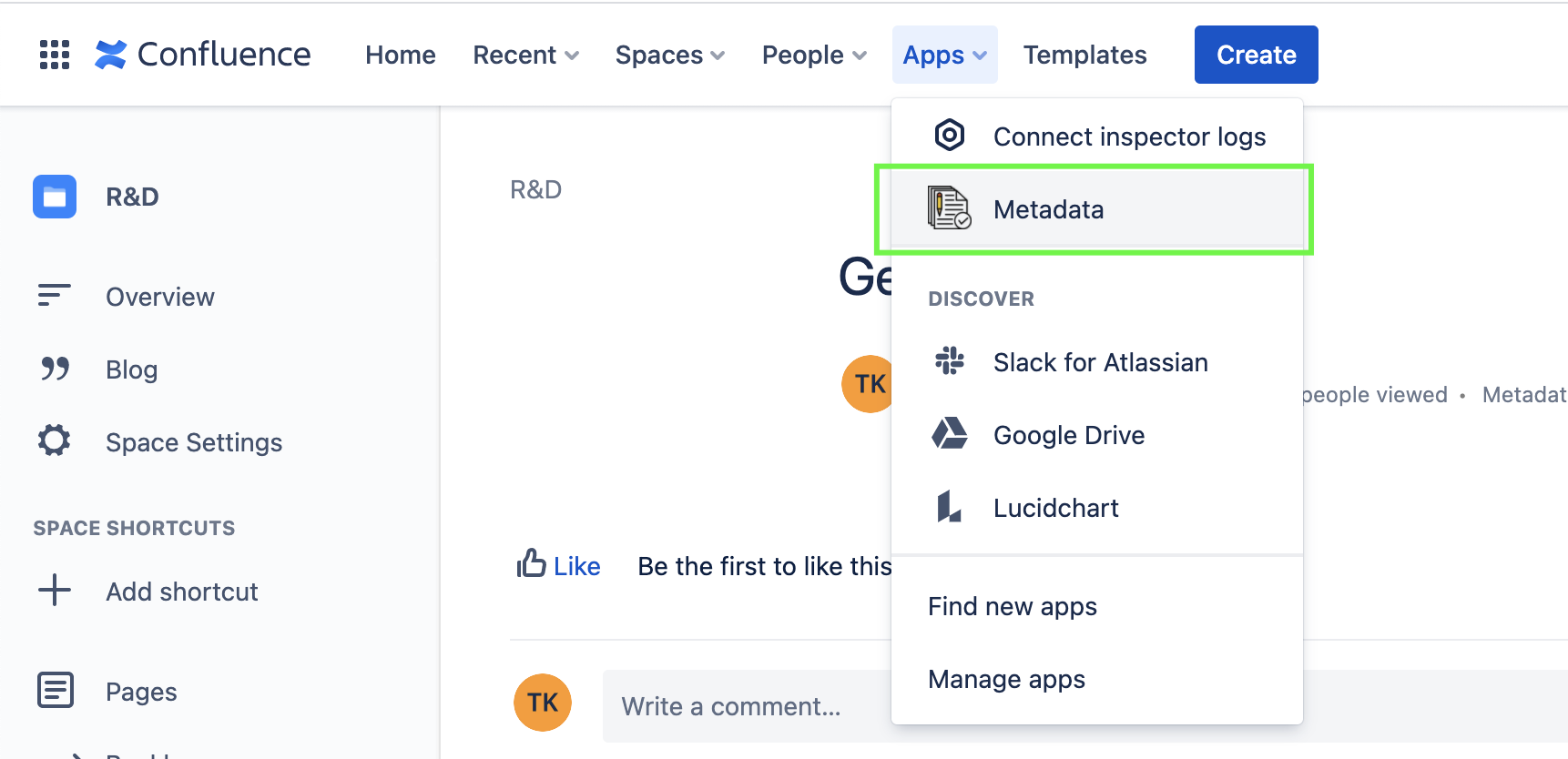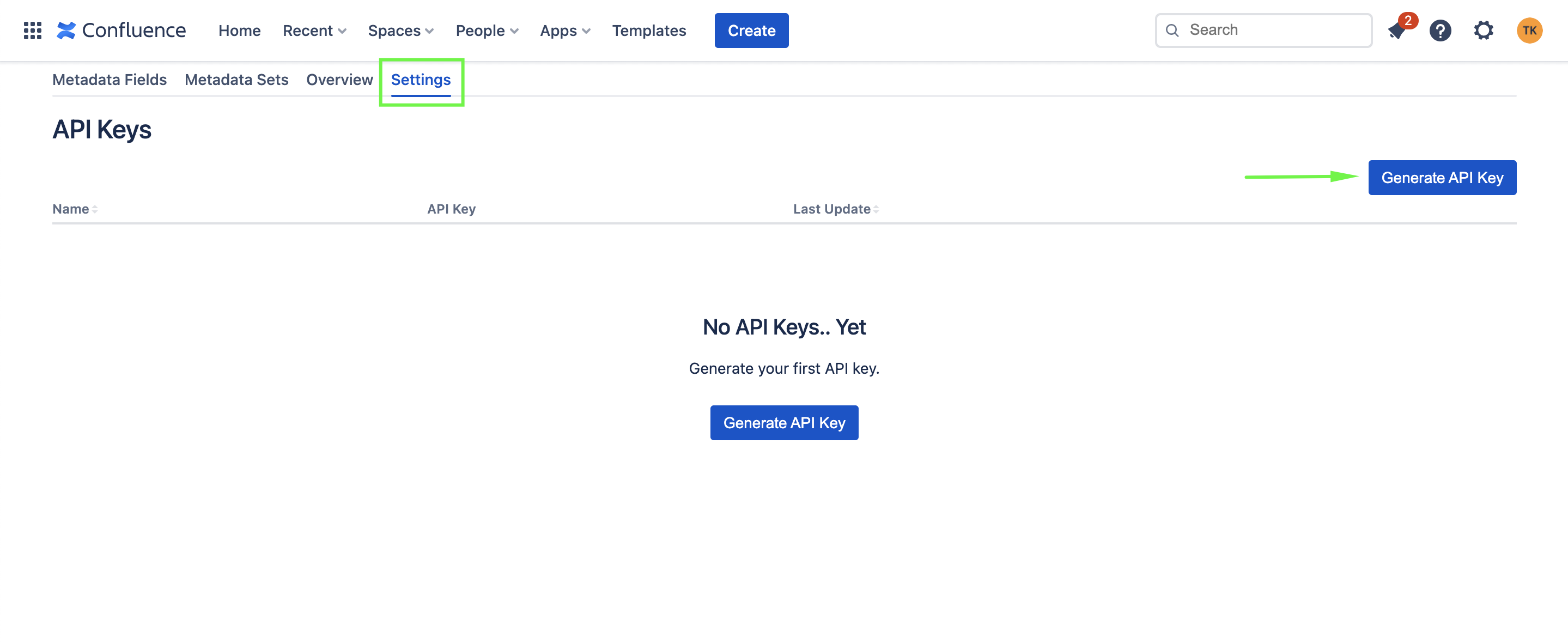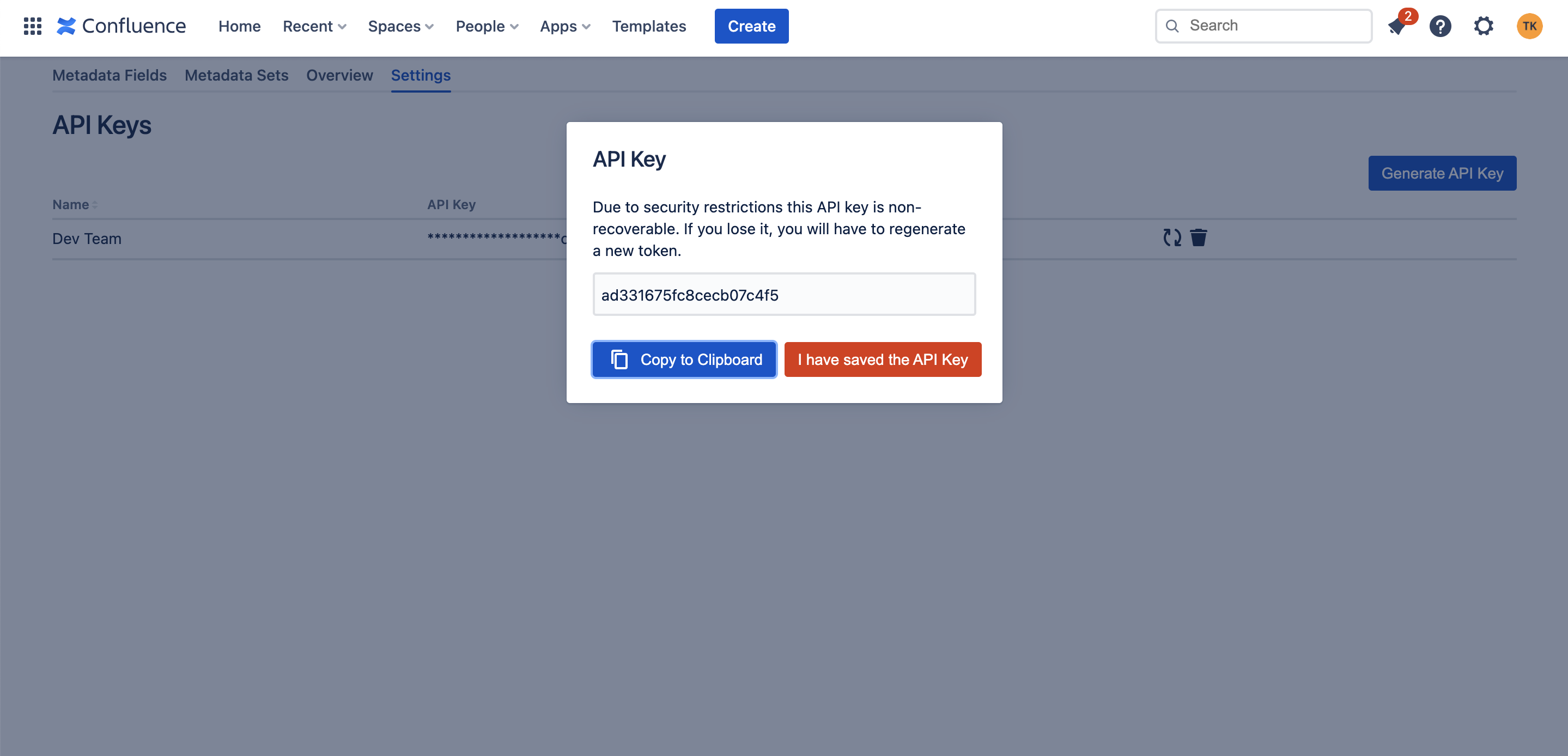Wiki
Clone wikiMetadata for confluence / Home
Metadata for Confluence Cloud
Overview
Metadata for Confluence Cloud enables you to easily assign and manage metadata in Confluence.
- Define custom fields of a large variety of options
- Assign any field to any page you like
- Use built-in marcos to:
- Display the metadata of a page
- Summarise metadata of multiple pages
- Manage your pages using the overview page:
- Filter by Metadata
- Filter by Space or label
- Bulk update pages with metadata
- Access and interact with your metadata programmatically via REST API. View API documentation
Configuring metadata field and sets
What are metadata fields?
Metadata fields are predefined page attributes comprising name and type that you use to fill in metadata.
Available types are: text, boolean (true / false), list (single / multi), date, external links and user.
What are metadata sets?
Metadata sets are collections of fields that can also be assigned to Confluence spaces.
It is possible to assign a field to different sets and have different values for the two on the same page.
Due to platform limitations, every organization can have up to 20 metadata sets and each set is limited to a number of fields from each type as below:
- Text - 10
- Checkbox - 10
- Select - 10
- Date - 8
- User - 8
- Link - 5
- Group - 2
How to create fields and sets?
- Go to Confluence Home
- Click on the "Metadata" menu item.
- A page with 3 tabs will show: "Metadata Fields", "Metadata Sets" and "Overview". By default, the fields tab is open.
- Click the "Add field" button on the top right corner and fill in the form. Finally, click save.
- After you have created the necessary fields, move to the sets tab.
- Click "Add set" button on the top right corner and fill in the form. Choose the fields it will be associated with. Optionally, you can also choose default spaces for the set. Finally, click save.
- You can also configure default values for the fields you choose. Once a page is created, the metadata will be populated automatically with the default values for the specified spaces.
- Now you can add metadata to all pages for the fields you have defined!
Edit and view Metadata
- Go to the confluence page you would like to input the metadata.
- Between the title and the content of the page, you will find some links. Look for "Metadata" and click it.
- A pop-up window will open displaying the metadata for the page.
- If you would like to fill in the metadata, click on the edit toggle on the right top corner.
- Choose the metadata sets for this page.
- Fill in the metadata for each collapsable set.
- Click submit on the bottom right corner of the pop-up.
Overview page
The overview page helps you manage your pages and together with its' metadata by advanced filtering capabilities and bulk operations.
To change the displayed columns click on the "Columns" button above the table, on the right side of the page, and selected the columns you want. Your selection will be remembered until the next time you decide to change it.
Filters
- The filters are located above the table on the left side of the page.
- There are 2 static filters: "Spaces" and "Labels". The other filters are dynamic.
- To add metadata filters, click on the "+ Filter" button and choose a field (All of the fields are grouped by their sets).
- The field will be added to the filters, click on it, set a value, and then click "Update".
Bulk Update
- Select the pages you want to update using the checkbox on the row of the page (first column)
- You may also check all rows on the page or all matching rows using the checkbox in the table header.
- Click on the "Bulk Update" button next to the "Columns" button.
- Choose the "fields to update" and enter values for each field
- Click update Note: Large amount of pages to update may take some time to complete
Macros
The app contains a couple of built-in Confluence macros to integrate the metadata into Confluence pages.
- Display Macro - Shows the metadata of a specified page
- Overview Marco - Shows a summary of multiple pages metadata. Including advanced filter capabilities and the ability to select the columns to display.
- Go to the confluence page you would like to use the macro in.
- Turn on the edit mode (click on the edit button).
- Locate the editor toolbar and click on Insert (+).

- In the pop-up menu click "View more".
- Search for "Metadata" in the select macro pop-up. Alternatively, you may find the macro under "Confluence content" or "Reporting".
- Choose the macro you would like to include on the page, fill in the parameters and click "Insert".
- Finally, publish the page.
REST API
Admin can generate an API key to integrate with their organization's metadata via REST.
How to generate an API Key?
- Open the Metadata app:

- Go to Settings:

- Click "Generate API Key"
- Set a descriptive name for the API Key and click Save. This name will be visible only on this screen and will help you identify your organization's tokens.

- Once the API Key is generated make sure to securely store it. No one has access to this key and we won't be able to regenerate it for you in case you forget it.

- This API Key will be used as the Bearer token for your API integration.
- View the documentation to make your first request easily.
Rate Limits
100 requests per 1 minute
Contact us if you'd like to extend your limits.
Updated